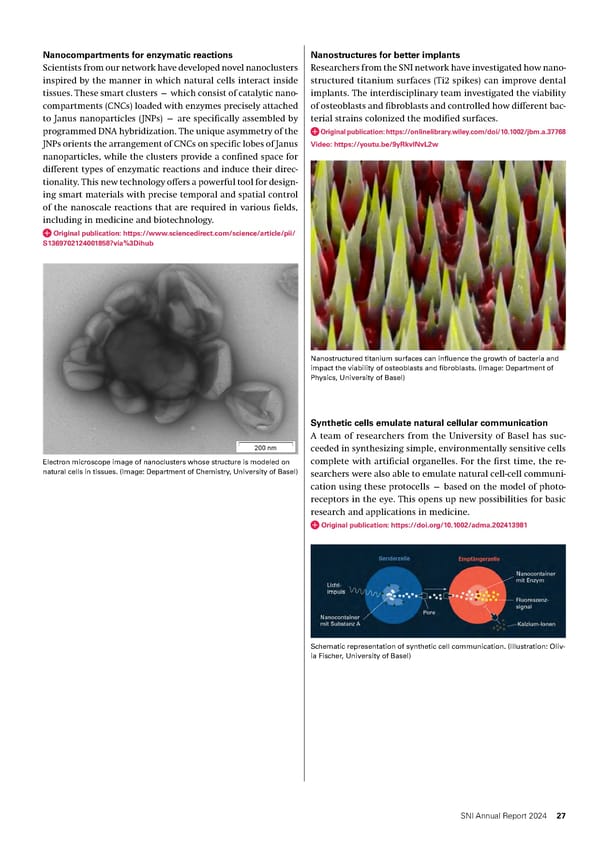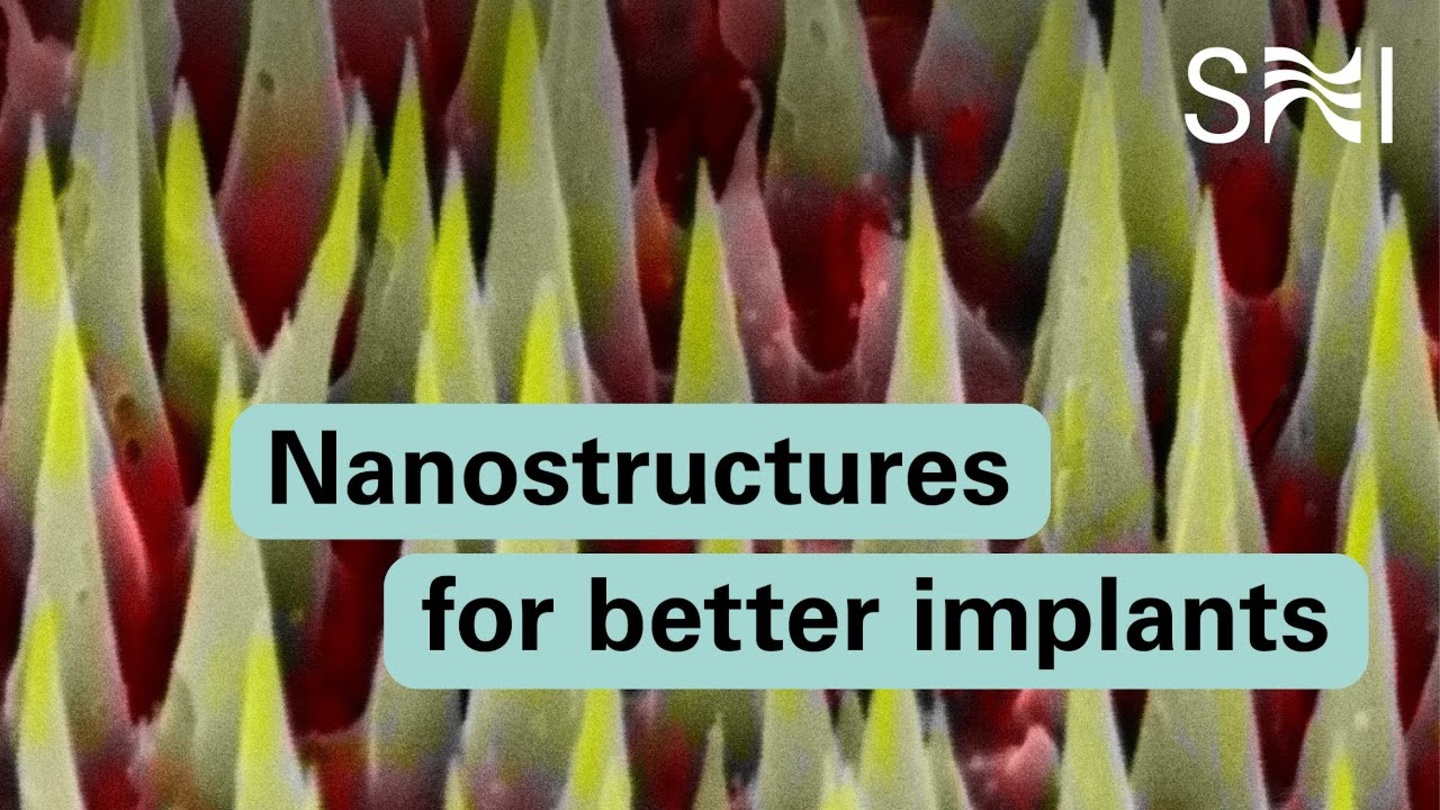Nanocompartments for enzymatic reactions Nanostructures for better implants Scientists from our network have developed novel nanoclusters Researchers from the SNI network have investigated how nano- inspired by the manner in which natural cells interact inside structured titanium surfaces (Ti2 spikes) can improve dental tissues. These smart clusters — which consist of catalytic nano- implants. The interdisciplinary team investigated the viability compartments (CNCs) loaded with enzymes precisely attached of osteoblasts and fibroblasts and controlled how different bac- to Janus nanoparticles (JNPs) — are specifically assembled by terial strains colonized the modified surfaces. programmed DNA hybridization. The unique asymmetry of the Original publication: https://onlinelibrary.wiley.com/doi/10.1002/jbm.a.37768 JNPs orients the arrangement of CNCs on specific lobes of Janus Video: https://youtu.be/9yRkvlNvL2w nanoparticles, while the clusters provide a confined space for different types of enzymatic reactions and induce their direc- tionality. This new technology offers a powerful tool for design- ing smart materials with precise temporal and spatial control of the nanoscale reactions that are required in various fields, including in medicine and biotechnology. Original publication: https://www.sciencedirect.com/science/article/pii/ S1369702124001858?via%3Dihub Nanostructured titanium surfaces can influence the growth of bacteria and impact the viability of osteoblasts and fibroblasts. (Image: Department of Physics, University of Basel) Synthetic cells emulate natural cellular communication A team of researchers from the University of Basel has suc- ceeded in synthesizing simple, environmentally sensitive cells Electron microscope image of nanoclusters whose structure is modeled on complete with artificial organelles. For the first time, the re- natural cells in tissues. (Image: Department of Chemistry, University of Basel) searchers were also able to emulate natural cell-cell communi- cation using these protocells — based on the model of photo- receptors in the eye. This opens up new possibilities for basic research and applications in medicine. Original publication: https://doi.org/10.1002/adma.202413981 Schematic representation of synthetic cell communication. (Illustration: Oliv- ia Fischer, University of Basel) SNI Annual Report 2024 27
 Annual Report 2024 - Swiss Nanoscience Institute Page 26 Page 28
Annual Report 2024 - Swiss Nanoscience Institute Page 26 Page 28
